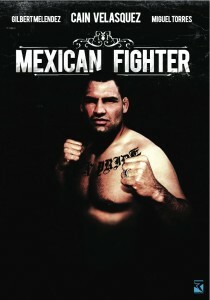Bobby Razak and his Razak Sports Films have returned with their latest MMA documentary, the long-time-coming Mexican Fighter. Filmed over the course of 2009 and part-way into 2010, before Cain Velasquez and Gilbert Melendez had solidified their places at the tops of their divisions (and before Miguel Torres’ fall from grace), this documentary looks at the history of these fighters, and the pressures – internal and external – that are placed upon them by virtue of their Mexican heritage.
Documentary Review: Bobby Razak’s “Mexican Fighter”
While Gilbert Melendez and Miguel Torres are featured here, both discussing their families, their upbringings, and how they got in to mixed martial arts, the real focus of this hour-long documentary is Cain Velasquez. Everyone from Cain’s parents to his Arizona State University wrestling teammates to quasi-shamanic American Kickboxing Academy staffer Huitzilin Mata are given time to speak on Cain’s past, present, and potential future. Mata especially treats Velasquez as an almost Messianic figure, saying that the (at the time) future UFC Champion needed to become “a hero of flesh and bone” to people of Mexican descent. The pressure that has been placed upon the heavyweight, both by himself and others, is enormous, and it’s a wonder that it hasn’t bogged him down.
The appearances from people like Frank (Juarez) Shamrock, Mark Dellagrotte, and Jake Shields help add color and background to the stories of the three fighters. Shields, it turns out, was instrumental in getting Melendez out of the wrestling room and on to the mats of Cesar Gracie Jiu Jitsu. Frank Shamrock is also able to lend his characteristic insight in what drives people of Mexican descent into fighting.
When all is said and done, this isn’t the best work of Bobby Razak’s career. It’s well-produced, it’s moderately informative, but in the end, it’s just there. Perhaps because it’s an ethnically-based piece, I’m having trouble being able to relate to it. That might be the point of it, though. This documentary could very well not be meant for people like me, but instead be meant to inspire future generations of Hispanic youth to pick up the 4 ounce gloves and step in the cage. I suppose if it does that, then it’s a success.


